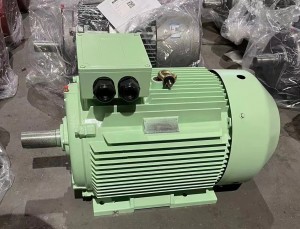The use of transformers in electrical machines is an important aspect of electrical engineering as it plays an important role in the efficient and safe operation of motor drive systems. Transformers are important components in electrical systems, used to step up or step down voltage to meet the requirements of various electrical equipment, including motors. In this article, we will explore the application of transformers on electric machines, their importance, and the benefits they provide in industrial and commercial settings.
Transformers play a vital role in motor operation by providing the voltage levels required for efficient performance. In many cases, the voltage provided by the grid may not be suitable for the requirements of the motor. This is where transformers come into play, as they can step up or step down the voltage to meet the specific needs of the motor. By doing this, the transformer ensures that the motor receives the correct voltage, which is critical for optimal operation and longevity of the motor.
One of the main applications of motor transformers is in industrial settings where large motors are used to drive heavy machinery and equipment. In this case, a transformer is required to step up the voltage to meet the high power requirements of the motor. This not only ensures smooth operation of the motor, but also helps reduce power loss and improve overall efficiency.
In addition to voltage regulation, transformers provide isolation and protection for motors. Isolation transformers are often used to protect motors from electrical interference and voltage spikes that can damage the motor windings. By isolating the motor from the mains supply, the transformer helps protect the motor from potential electrical faults and disturbances, thereby increasing its reliability and safety.
Transformers help improve the energy efficiency of motor drive systems. By boosting the voltage, the transformer is able to transmit power over long distances with minimal losses, which is particularly beneficial for industrial applications where the motors are located far from the main power supply. This helps reduce energy waste and improves the overall efficiency of the sysing transformers on motors allows flexibility in power distribution. In facilities that use multiple motors with different power ratings, transformers can be used to adjust voltage levels to the specific requirements of each motor, ensuring they operate optimally without overloading or underperforming.
Another important application of transformers in electric motors is variable frequency drive (VFD) systems. VFDs are widely used to control the speed and torque of electric motors, and transformers are an integral part of these systems as they are used to step up the voltage input to the VFD, enabling precise control of the motor’s speed and performance.
The application of transformers on motors is crucial to ensure efficient and safe operation of motor drive systems. From voltage regulation and isolation to energy efficiency and distribution flexibility, transformers play a vital role in optimizing motor performance in a variety of industrial and commercial applications. With the continuous advancement of technology, the integration of transformers and motors will continue to develop, further improving the reliability and efficiency of motor drive systems.
Post time: Apr-07-2024






